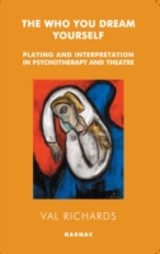Details

Who You Dream Yourself
|
25,49 € |
|
| Verlag: | Karnac Books |
| Format: | EPUB |
| Veröffentl.: | 15.07.2005 |
| ISBN/EAN: | 9781780495866 |
| Sprache: | englisch |
DRM-geschütztes eBook, Sie benötigen z.B. Adobe Digital Editions und eine Adobe ID zum Lesen.
Beschreibungen
'At the time of beginning my own therapy, I was teaching drama and theatre studies and become fascinated by the analogies between theatre and therapy, especially by how these set-apart space-times affect the behaviour of meaning-making and the seeming immensity of the therapist's power.'...as a trainee psychotherapist, discovering the writings of Winnicott, I realised that his theory of transitional phenomena and his vision of "e;playing"e;...provided a theoretical underpinning to the bond between theatre and therapy, bringing together the three parts of this book.'- From the IntroductionThe motif of time and space runs as a continual thread through this book, which examines the relationship between psychotherapy and the theatre as underpinned by Winnicott's writings. Richards supplements her theories with Jung's ideas on self, the writings of Lacan and the prose, drama and poetry of Yeats - an unusual blend between diverse and often opposing schools of thought.The book itself is divided into three parts. Part One focuses on the workings of language, space and meaning-making in the settings of infancy, therapy and theatre. Part Two looks at the "e;struggle between masks"e;, which is used as a metaphor for self and the representation of self. Richards considers how the phenomenon of theatrical "e;forced masks and free masks"e; serves as an analogy for the range of positions inadequately covered by the True and False Self dichotomy of Winnicitt. Part Three looks at signs and times by showing that space and linear time are one and indivisible: disturbance in one means disturbance in the other. The point is illustrated with an in-depth examination of Yeat's Purgatory. Elsewhere in the book, case studies are used to illustrate formulations.This book is highly recommended for analysts, therapists and trainees, in particular child and Winnicottian therapists, and anyone with an interest in the role of theatre plays in the wider world.
Diese Produkte könnten Sie auch interessieren:

Coaching und Mentoring. Unterschiede, Vorphasen und Fragetechniken im Coaching-Prozess

von: Aimee Sommer

8,99 €















